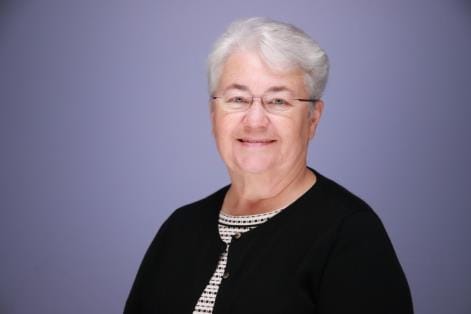 Healthcare supply chain’s magnificent 7 rides through wild west of progress
Healthcare supply chain’s magnificent 7 rides through wild west of progress
Delivering high-quality patient care more challenging, complicated and necessary
Just as seven heroic cowboys — each bringing different skills to the team of collaborators — protected a village against the villainy of injustice and oppression, risking their lives and livelihood with several making the ultimate sacrifice for the greater good in the famous 1960 Western action film, "The Magnificent Seven" (itself an American remake of the 1954 Japanese action film, "Seven Samarai"), seven key participants fortify and sustain the healthcare supply chain industry and profession.
After five years of climbing from the throes of the global pandemic and the resulting economic turbulence and uncertainty to the peak of the mountain mid-decade, all seven now must look ahead to drive progress and prepare for a prospective new administrative, clinical, financial and operational order come 2030.
Who are the seven? They are best represented by the categories recognized by Bellwether League Foundation's Healthcare Supply Chain Leadership Hall of Fame: Provider supply chain departments, group purchasing organizations (GPOs), distributors, manufacturers, consultants, academic institutions and media outlets.
All seven collaborate and contribute in myriad ways to enable and ensure that the healthcare supply chain remains stocked and unclogged for the delivery of patient care.
Leaders & Luminaries asked experienced members of the expansive Bellwether Community to share their insights and projections for how and what all seven participants must contribute to an industry and profession that yearns to be better off five years from now than it was five years ago. Here's what they recommended.

Tom Lubotsky, Bellwether Class of 2022, vice president and Chief Supply Chain Officer, Allina Health, Bronze Sustaining and Educational Sponsor
- Provider supply chain departments: Governance of non-labor spend, inclusive of expanding the span of control across all departments.
- GPOs: Develop new business models to bring a full range of solutions to providers by optimizing the management fees paid today.
- Distributors: Develop data transparency systems and capabilities that create higher accountabilities to managing supply disruptions and novel inventory management models to providers.
- Manufacturers: End-to-end supply chain solutions that enable a higher capability to efficiently manage On Time and In Full (OTIF) and transactions with provider. In addition, stronger abilities to managing product and service value dimensions.
- Consultants: Continue to bring capabilities where providers do not have the capacity or ability to address innovative solutions required to manage the full end to end supply chain.
- Academic institutions: Contribute research to how best to innovate and bring more effective levels of patient care. Participate in capstone projects within supply chain among leading providers that advance the knowledge and know-how of supply chain.
- Media: Promote best practices and contributions by leading supply chain organizations within the industry.

Bellwether League Foundation Board Chairman Barbara Strain, Bellwether Class of 2021
- Provider supply chain departments: Utilize cross functional leaders and staff from across their organizations to augment non-supply chain specific functions.
- GPOs: Decide what your lane is. It started as contracting to take the burden off of healthcare organizations, now it's a competition for members and asking them to convert, give up something that is working to gain something they may not need, a wholesale assessment of purpose supporting patient care.
- Distributors: Develop relationships not just services you can sell, see manufacturers contribution response.
- Manufacturers: Understand what issues exists and discuss with key stakeholders — patient, doctors, nurses, technologists, etc., and solve for impactful results.
- Consultants: Say the same thing to providers and suppliers — one consistent message to align care.
- Academic institutions: Bring in current supply chain think — operations, technology, project management, LEAN and IT — and apply to healthcare courses; change the narrative from the beginning.
- Media: Report more what is working in healthcare or point to resources for organizations to apply and adapt.

Fred Crans, Bellwether Class of 2020, Outreach Ambassador on the BLF Board of Directors, and business development executive, St. Onge Co., Silver Sustaining Sponsor
- Provider supply chain departments: [Providers] need to up their game. Go from a transactional support "department" to a strategic operational "function." Supply chains must become staffed by professionals, not amateurs, and they will need to add people with skillsets that are probably absent today.
- GPOs: GPOs need to be seen as offering real "value-adds" — especially to those smaller systems that do not have the financial resources to recruit and hire for highly technical positions. Getting better prices for bandages will not do it.
- Distributors: Distributors will have to form collaborative and mutually beneficial relationships with the providers. Some have already begun constructing warehouses and distribution facilities that house the supply chain operations of their key customers.
- Manufacturers: Suppliers and manufacturers need to form honest, mutually beneficial relationships that are transparent and cooperative with the providers. Their supply chains need to talk with the providers' supply chains. Formerly providers talked with the sales team and seldom, if ever, to the suppliers' supply chain executives.
- Consultants: There are two times to hire a consultant — when you need one and when you don't. The truly forward- thinking healthcare organizations (HCOs) use consultants proactively to help them plan for the future and avoid catastrophes. That accounts for about 20% of the time consultants are engaged. The other 80% is after a catastrophe has occurred, and survival is in doubt. Used wisely and correctly, consultants bring specific skillsets to specific problems and provide specialty personnel that the HCOs either do not have or do not have enough time to use them.
- Academic institutions: Academic institutions will provide the leaders of the future. The future supply chain will require true supply chain professionals, and the academic institutions will produce them.
- Media: There are two types of media outlets — inside and outside. The inside media's role is to report on and provide information that is useful to the industry via journals, newsletters, periodicals, etc. The outside media is geared to tell stories that the general public will read. General stories seldom include the supply chain unless there is a catastrophe, such as last year's hurricanes, that disrupts the flow of goods and services. For the most part, people are not flocking to the grocery store check-out lanes to read articles about the healthcare supply chain. Still, responsible reporting of key healthcare issues, including those that relate to the supply chain, is a necessary element of an informed populace.

Gail Kovacs, Bellwether Class of 2024, and a retired supply chain veteran
- Provider supply chain departments: Efficiency, effectiveness, responsiveness.
- GPOs: Cost effectiveness, efficiency, value-driven opportunities, responsiveness.
- Distributors: Cost effectiveness, efficiency, value-driven opportunities, anticipatory responsiveness.
- Manufacturers: Cost effectiveness, efficiency, value-driven opportunities, anticipatory responsiveness.
- Consultants: Maintain vigilance of high performing organizations/entities; incorporate those points of success into the techniques to improve performance in operations, clinical and financial process improvement.
- Academic institutions: Maintain vigilance of high performing organizations and entities; incorporate those points of success into educational programs and presentations.
- Media: Continued publication of success and challenges, highlighting process and procedure that overcame obstacles or positioned for success, report meaningful outcomes.

Rand Ballard, Chief Customer Officer, Vizient Inc., BLF Founding and Educational Sustaining Sponsor
- GPOs: Must continue to learn, evolve and be relevant. Those that continue to assure they have the ability to drive incredible value for hospitals will survive and thrive.
- Distributors: Must assure that their value proposition is based on being able to create distribution alternatives to self-distribution and not relying on private label or self- manufactured products to make their distribution model work.
- Manufacturers: Must assure they are diversified where they manufacture and that domestic/USA is going to be a much-needed alternative for any type of world conflict (e.g., COVID, tariffs, war, etc.). Clearly, supply chain disruption can be minimized if they are domestic/USA-manufactured products.
- Consultants: In 2030, we can no longer rely on experience but must be able to use real-time data and clinical insights to make decisions to drive fundamental change. This must be based on data, not just price — on total value.
- Academic institutions: Need to make sure their research stands on its own, that universities stand on their own and the hospitals owned by the [academic medical centers] have enough funds to operate, thrive, educate and produce high-quality doctors, etc. No longer can universities fund the universities and research.
- Media: This is too much to ask, but accurate reporting from media on healthcare issues based on data and facts, not political opinions.

Tom Redding, executive vice president and healthcare practice leader, St. Onge Co., Silver Sustaining Sponsor
- Provider supply chain departments: Standardize internal processes, item master data and contract compliance; invest in real-time analytics and automation to improve demand planning and reduce waste; and foster strong internal collaboration with finance, IT and clinical teams to become a strategic partner, not just a transactional service.
- GPOs: Serve as key facilitators for standardization in contracting language, product categorization and performance metrics; lead multi-system efforts in emergency preparedness and shared logistics infrastructure; support member education on total cost of care and long-term supply chain planning.
- Distributors: Build hyper-responsive, regionalized distribution models to reduce reliance on overseas supply and long lead times; offer predictive replenishment models powered by artificial intelligence (AI) and real-time provider data; partner more deeply on consignment inventory, stockless delivery and mobile inventory solutions.
- Manufacturers: Increase transparency into raw material sources, production timelines and availability forecasts; invest in domestic or near-shore manufacturing capabilities for critical items; commit to standardized product identification (e.g., GS1) and digital labeling for traceability and recalls.
- Consultants: Benchmark performance across peer institutions and bring cross-industry innovations (e.g., retail, logistics) into healthcare; support the shift toward value-based supply chains, helping align financial and clinical incentives; facilitate scenario planning and supply chain risk simulations to build resilience.
- Academic institutions: Develop next-generation healthcare supply chain curricula, incorporating data analytics, AI and systems thinking; lead applied research in supply chain resilience, AI-driven forecasting and cost-quality outcomes; partner with health systems and manufacturers to offer real-world learning opportunities and applied capstone projects.
- Media: Investigate and bring attention to supply chain vulnerabilities, regulatory issues and progress on standardization; act as a bridge to amplify collaboration and celebrate transparency, ethics and sustainability efforts; facilitate national conversations around policy, preparedness and the social impact of healthcare supply chains.

Eugene Schneller, Ph.D., Bellwether Class of 2024, professor, Supply Chain Management, W.P. Carey School of Business, Arizona State University, renowned lecturer and industry observer
- Provider supply chain departments: Develop capability to support new points of care (e.g., hospital and ICU at increase transparency within sector to support leverage for negotiations; develop standards for evidence-based decision making by value analysis teams.
- GPOs: Utilize data to improve benchmarking to support member ascent to meet and exceed industry best practices; better develop negotiation skills to "bend the cost curve;" advocate and support standardization across members to support more aggressive negotiating position; support [standard] universal device identification (UDI) implementation; standardize contractual language regarding geopolitical risk; reduce cost to serve by implementing AI for key business and SC functions.
- Distributors: Support the development of Common Pool Organizations and stockpiles to assure resilience and just in case; support UDI implementation.
- Manufacturers: Provide support for upstream tiers to protect against disruptions, invest in R&D with goal to reduce both production and cost to serve to support customer viability challenges.
- Academic institutions: Develop shorter skill-based programs for new and emerging technologies; provide clear recommendations for moving research findings into practice; be known for practice inspired research; rethink accreditation criteria.